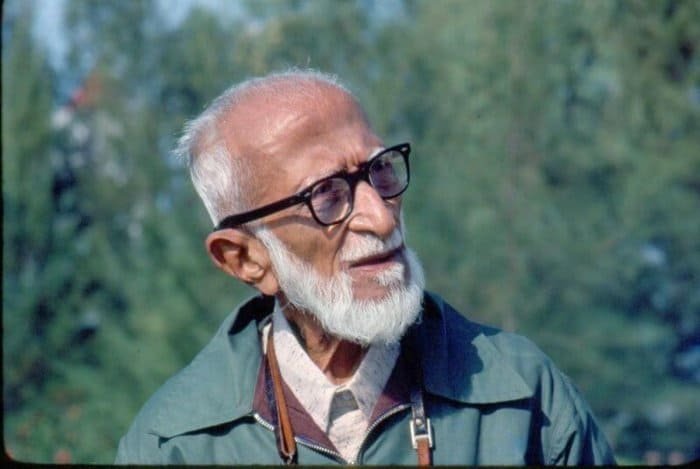
A.P.J. Abdul Kalam | Biography, History, Books, Thoughts....
Wherever India is today, in the 21st century. He has arrived after a lot of hard work. The first struggle was the slavery of the country. Second struggle, the country had no technology of its own. India became independent in some way or the other. But what will happen to the country next? No one knew this. It was a big deal for India to get independence.
After getting independence, India received daily threats from big countries like America, France, China. During this time such a person was born in India. The one who has carried the country of India on his shoulders and has taken it to that point. Wherever India is in the 21st century. This is because of his immense contribution. You might have understood. This is the Missile Man of India Dr APJ Abdul Kalam.
Born: 15 October 1931, Rameswaram, Tamil Nadu
Died: July 27, 20 15, Shillong, Meghalaya
Position/Function: Former President of India
Achievements: As a scientist and engineer, he worked on several important projects of Defense Research and Development Organization (DRDO) and Indian Space Research Organization (ISRO).
Dr APJ Abdul Kalam was an eminent Indian scientist and the 11th President of India. He worked in some of the most important organizations of the country (DRDO and ISRO). He also played a key role in the Pokhran II nuclear test in 1998. Dr Kalam was also associated with India's space program and missile development programme. That's why he is also called 'Missile Man'. Kalam was elected the President of India in 2002 and after serving a term of 5 years, he returned to teaching, writing and public service. He was honored with several prestigious awards including Bharat Ratna, India's highest civilian honour.
Early life
Avul Pakir Jainulabidin Abdul Kalam was born on 15 October 1931 in Rameswaram, Tamil Nadu in a Muslim family. His father Zainulabidin was a sailor and his mother Aashiamma was a housewife. His family's financial condition was not good, so he had to work from an early age. To help his father financially, Kalam used to distribute newspapers after school. During his school days, Kalam was normal in studies but always ready and ready to learn new things. He had a hunger to learn and used to concentrate on studies for hours. He completed his schooling from Ramanathapuram Schwartz Matriculation School and then joined St. Joseph's College, Tiruchirappalli, from where he gra
Carrier
After completing his engineering studies from Madras Institute of Technology, Kalam joined the Defense Research and Development Organization (DRDO) as a scientist. Kalam started his career by designing a small helicopter for the Indian Army. Kalam was not getting satisfaction from his work in DRDO. Kalam was also a member of the Indian National Committee on Space Research constituted by Pandit Jawaharlal Nehru. During this, he got a chance to work with famous space scientist Vikram Sarabhai. In 1969, he was transferred to the Indian Space Research Organization (ISRO).
Here he was appointed as the director of India's satellite launch vehicle project. As a result of the success of this project, India's first satellite 'Rohini' was placed in Earth's orbit in the year 1980. Joining ISRO was a turning point in Kalam's career and when he started working on the Satellite Launch Vehicle project, he realized that if he was doing what he wanted to do.
During 1963-64, he also visited the American space organization NASA. Nuclear scientist Raja Ramanna, under whose supervision India conducted the first nuclear test, also invited Kalam to witness the nuclear test at Pokhran in 1974.
Dr. Kalam became very famous in India for his works and successes in the seventies and eighties and his name was counted among the greatest scientists of the country. His fame had grown so much that the then Prime Minister Indira Gandhi allowed him to work on some secret projects without the approval of his cabinet.
The Government of India under the supervision of Dr. Kalam launched the ambitious 'Integrated Guided Missile Development Programme'. He was the chief executive officer of the project. This project has given missiles like Agni and Prithvi to the country.
From July 1992 to December 1999, Dr Kalam was the Scientific Adviser to the Prime Minister and Secretary, Defense Research and Development Organization (DRDO). During this, India conducted its second nuclear test. He played an important role in this. R Dr Kalam was the coordinator of the project along with Chidambaram. The media coverage received during this time made him the country's greatest nuclear scientist.
In the year 1998, Dr Kalam developed a low cost 'coronary stent' in collaboration with cardiologist Soma Raju. It was named 'Kalam-Raju Stent'.
Read More: Swami Vivekananda Biography in Hindi
President of India
In view of his achievements and fame as a defense scientist, the coalition government of NDA India made him a presidential candidate in the year 2002. He defeated his rival Lakshmi Sehgal by a huge margin and was sworn in as the 11th President of India at 25. July 2002.
- Robert Hooke - Biography
- Jagadish Chandra Bose | Inventions, Education, & Biography
- Uncovering the Life and Impact of Johannes Kepler: The Father of Modern Astronomy
Note: This blog or artical is written on the basis of online research, news paper and AI tools. So, if there is any issue, please mail your feedback.
- Share:









